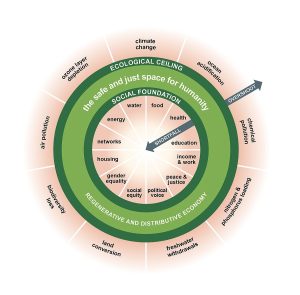In 2019, the United Nations established an agenda for all countries to achieve 17 sustainable development goals, or SDGs, by 2030. They made this as a part of a program to promote economic, social, and environmental development across the world. These goals range from ending poverty to climate action to making clean energy affordable to gender equality. Although they do not give countries a concise “how,” they allow every nation to establish objectives that can guide them forward in a sustainable way. While each of these goals is important, some have criticized the United Nations for not laying out a clearer framework for which goals should be accomplished first.
The difficulty lies in the pressure these goals place on developing nations to switch to more sustainable laws. When a country lacks the infrastructure and economic stability to support sustainable practices, it cannot achieve the previously mentioned SDGs. In a sense, these developmental goals act as a limitation on nations that are desperately trying to expand economically. For example, if a country does not have reliable energy, it is challenging to implement clean energy laws effectively. Despite this, sustainable development goals are a worthy pursuit. In the wake of unprecedented damage from humans to the planet, we need every country to work towards a future that accounts for environmental impact.
More developed nations, like the United States, need to take responsibility to move towards environmentally based SDGs because they have the economic stability to do so. Developing nations need to focus on policies that improve living conditions and education. The only way for nations to prioritize things like clean energy programs is for them to have the reliable infrastructure to make the transition. If not, poverty will increase, and sustainability efforts will fail. The chart below commonly referred to as “The Doughnut” helps one visualize the balance that must be struck between social factors and environmental factors as driving forces for action. In an ideal world, a nation could achieve all 17 SDGs and make advances in the ecological ceiling while maintaining a strong social foundation. The social foundation is not present across all countries, especially in developing nations. Regardless, it is necessary before countries can effectively tackle issues like climate change.

The goals proposed by the United Nations help to shed light on issues of poverty, education, and urbanization in developing nations. It also helps remind people living in developed nations that even the ability to embrace sustainable programs is an economic privilege and not one to be taken for granted.
Citations
Sachs, J. D., Schmidt-Traub, G., Mazzucato, M., Messner, D., Nakicenovic, N., & Rockström, J. (2019). Six transformations to achieve the sustainable development goals. Nature sustainability, 2(9), 805-814.
SDG, U. (2019). Sustainable development goals. The energy progress report. Tracking SDG, 7.
Hák, T., Janoušková, S., & Moldan, B. (2016). Sustainable Development Goals: A need for relevant indicators. Ecological indicators, 60, 565-573.
El Rifai, Ayman Ramon. (2021) Sustainable Development in Developing Countries. Circle of Sustainable Europe. https://cose-eu.org/2021/10/11/sustainable-development-in-developing-countries/.
